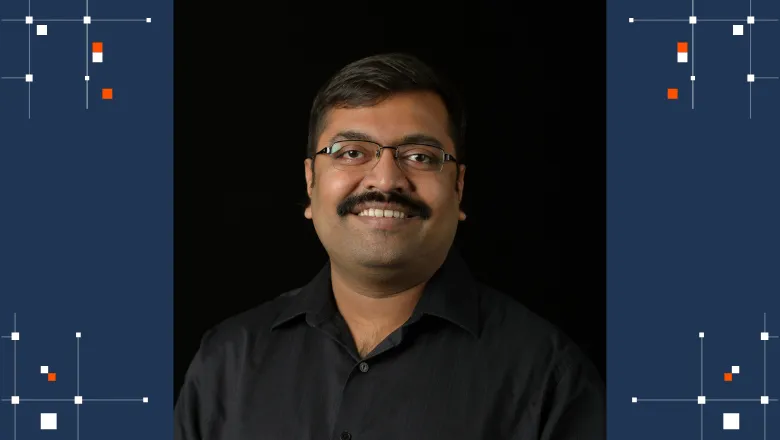28 May 2024
In Conversation with Professor Prashant Jha
Professor Prashant Jha is the Professor of MedTech Innovation and Entrepreneurship and the Head of Affordable Medical Technologies at King’s, and has designed the new MSc in MedTech Innovation & Entrepreneurship. We spoke to Prashant about his journey from GP to engineer to entrepreneur, and how students can benefit from his 5D model for medical device development.

Hi Prashant, could you please tell us about yourself and what you do at King’s?
I initially trained as a GP and started practising medicine. But I always had a niggling thought in the back of my mind, ‘What’s next for me?’ I returned to education with the motivation of designing creative solutions in the world of MedTech. I started by studying biomedical engineering at the Indian Institute of Technology Kanpur, followed by Product Design at Stanford University, and have since worn many hats- physician, engineer, entrepreneur, inventor – to name a few. My teams and I have invented and commercialised medical devices in the areas of wound management, foetal monitoring, menopause management, non-pharmaceutical blood pressure management, obstructive sleep apnoea, and fracture management, to name a few.
I am the Head of Affordable Medical Technologies at the School of Biomedical Engineering & Imaging Sciences at King’s and direct the MSc in MedTech Innovation and Entrepreneurship programme along with Professor Paolo Aversa of King's Business School. I also direct the King's Health Partners Executive Leadership programme for Surgeons. I train engineers, medics, designers, and business professionals in the art and science of designing low-cost, high-impact medical technologies.
Your work has taken you to healthcare systems all over the world where you have implemented your solutions. What made you decide to finally continue this within the NHS, and at the university?
I have worked on creating ecosystems for innovating medical devices and technologies in Australia, Finland, India, Japan, and the UK. In the beginning, my work was shaped by America’s healthcare system, which is profit-driven. As I started to deploy the model in countries including the UK and India, there was a shift. These systems are run for impact, not for profit. My focus changed to the sustainability of the solution, which became the defining model for the MedTech Innovation & Entrepreneurship MSc.
I have always been enamoured by the NHS. It embodies one of the greatest human ideals – everyone irrespective of their class gets a similar treatment. I have not seen this in the other countries where I have worked. When I was given the opportunity to innovate for the NHS, I jumped at it and am very proud to be a part of it.

You’ve supplemented your expertise in biomedical engineering with training in product design. What additional value has this brought to your work?
After a decade of working as a general practitioner, I returned to education, developing expertise in biomedical engineering. However, engineering alone wasn’t enough to fix the challenges I’d experienced working in healthcare. I noticed a gap- healthcare professionals don’t have the tools or time to create solutions. Engineers have the expertise to build, not design. Designers lack insight into the challenges healthcare professionals face.
Everything came together after studying medical technology design at Stanford University. Inspired by what I learnt there, my 5D model for MedTech – Discover, Define, Design, Develop and Deploy – was born. I realised that by combining these areas of expertise, we have opportunities to personalise care, accommodating individuals and their constraints. Good design can go beyond creating effective solutions- it can also allow us to factor in patients’ beliefs and what they think is good for them rather than being prescriptive.
In your view, what takes a good product in the MedTech sector from idea to implementation?
I believe empathy with your end user is a key element of innovating in MedTech. This is the cornerstone of the 5D model that has already had some initial successes such as Coolzen, a wearable device for menopausal women, and FlexiOH®, a unique alternative to plaster casts for broken bones.
The Discover phase is all about finding what inspires you by interacting with the people you’ll help – patients, nurses, physiotherapists and more, eventually leading you to the Define phase, where you zero in on a problem to get married to. You need to define what the specific issue is that you can happily dedicate your limited time and resources to solving. We then come to Design, where you need to come up with hundreds of ideas and engage with your end user. Let others critique your ideas, listen to suggestions, and then improve. Once you have an idea that you are confident will be manufacturable and has the potential to be patented, we enter the Develop phase, when you take action, whether this involves hiring a team, securing a grant or applying for internal funding. We finally reach the Deploy stage, which is the period of joy when the product or service is released into the world.
The 5D model has also evolved and been refined over the last ten years. Initially, it was only intended for people who wanted to create start-ups. Now it’s for anyone who wants to become more entrepreneurial in their thinking, as well as intrapreneurs who want to improve processes where they are employed.
What is unique about the MSc MedTech Innovation Entrepreneurship course at King’s?
I myself used the 5D model while designing the MSc - this involved interviewing students and MedTech employers to understand what would strike the right balance between their needs. My colleagues at KBS (King's Business School) researched the global need for a comprehensive MedTech training programme and we heard from prospective students. Students said they valued time in clinics, so that’s built into the programme. Employers repeatedly told me that graduates didn’t have enough insight into the business of MedTech, so the course gives students a strong understanding of the industry too.
What’s special about this programme is how the dots have been connected to bring together medicine, business, and engineering, all areas of excellence at King’s. There isn’t another programme that takes the same approach. It creates a link between the modules across these areas and unites experts to help ambitious minds look at the bigger picture of MedTech. The students are trained across KBS and the Faculty of Life Sciences & Medicine with unrivalled access to the best of what King's offers in these domains. It also allows students to learn what they are motivated by – essentially building their own degree. For example, an engineer in the programme can choose to study robotics or AI in healthcare. A pharmacy student can pick up optional modules in the Faculty of Life Sciences & Medicine, and a business student can learn the basics of machine learning or international marketing.
The students work in interdisciplinary teams – an experience very close to the real-life workplace - on projects that are offered by MedTech industry partners or start-ups. Those willing to create a MedTech start-up can potentially meet their co-founders and build a start-up team.
Embedded inside the vibrant MedTech ecosystem at the London Institute for Healthcare Engineering, the students have unrivalled access to MedTech innovators, funds, and advisors.


